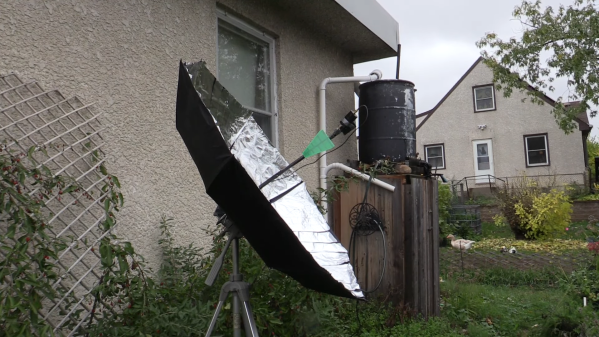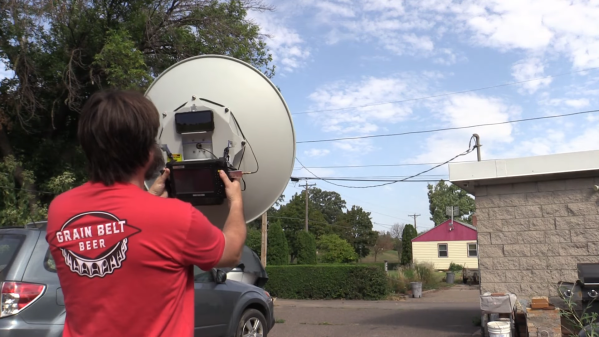You never know when you’ll be called upon to [MacGyver] your way out of an emergency. We can’t imagine what kind of situation would call for whipping up a satellite ground station for NOAA weather satellites from junk, but hey, it could happen.
And when it does, you’ll be ready — as long as you have an umbrella, some foil tape, and various bits and bobs like wire and an RTL-SDR dongle. That’s what [saveitforparts] used for his field-expedient build, at least in the first instance; as you can imagine, builds like this take a lot of tweaking to get right. The umbrella and foil tape form the main reflector for the antenna, with a pie tin, a scrap of wire, and some random twigs being used to build the antenna’s helical feed. Attached to a SAWbird LNA/filter and an RTL-SDR plugged into a dodgy second-hand phone, he was able to get at least some kind of data from one of the GOES satellites, but it wasn’t great.
Switching the feed to a commercially available log periodic antenna worked much better, with some partial decodes of weather map data. Actually, getting anything at all with a setup like this is impressive enough for us to call it a win. It shows that the umbrella approach to antennas is valid; but then again, we already knew that.
Continue reading “Umbrella Antenna Protects You From Rain, But Not The Way You Think”














